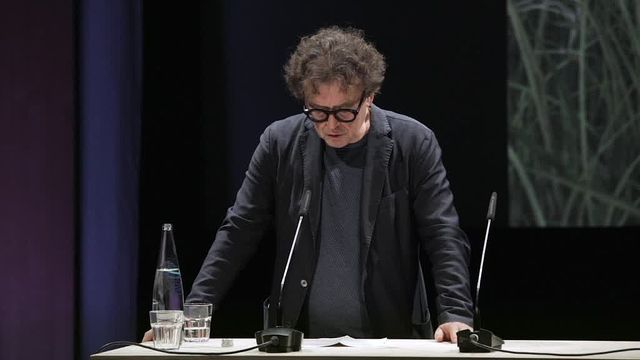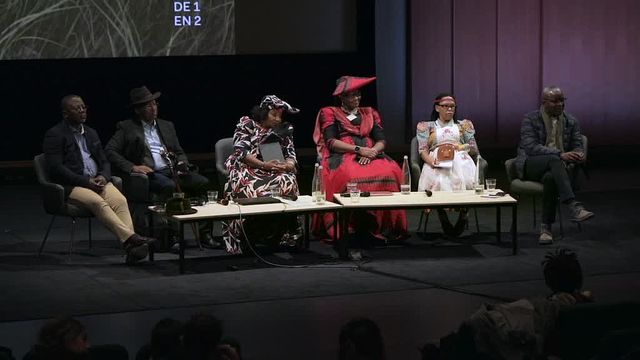Conference
The German Colonial Genocide in Namibia
A Case for Reparations
In English and German with simultaneous translation in each language
Between 1904 and 1908, German imperial forces perpetrated the first genocide of the 20th century in then German South-West Africa, involving the targeted ‘extermination’ of large numbers of Ovaherero, Ovambanderu and Nama people and the killing of many others. The conference presents the initial stage of ongoing collaborative research and discusses the effects of these colonial crimes.
While the traumatic memory of the German colonial genocide and the inter-generational harm it caused is ubiquitous in Namibia, especially among the affected Ovaherero and Nama communities Germany’s colonial history and its bloody legacy is still underrepresented in contemporary German public discourse.
The conference The German Colonial Genocide in Namibia: A Case for Reparations presents the first findings of a research conducted by Forensic Architecture/Forensis, together with the Ovaherero/Ovambanderu Genocide Foundation (OGF) on sites of key importance in the German genocidal campaign around the Waterberg area. An accompanying discussion with representatives from the Ovaherero, Ovambanderu and Nama communities organized by ECCHR, explores challenges and shortcomings in addressing Germany's colonial negation and the subsequent renunciation of its duty of repair. The contributors demand reparations, restitutions and redress according to the needs of the affected people within and beyond the existing international legal frameworks.
The first phase of the research by Forensic Architecture/Forensis/OGF is presented in eight new investigative videos, which will be on display from November 4–6 in the cloakroom lobby of HKW. In these films, German archival photographs are located within constructed 3D environmental models. Intergenerational oral testimony fills the ruptures and erasures between the frames of the colonial photography, revealing multiple relations between architecture and landscapes, the displacement of Indigenous settlements and environmental transformations catalyzed by the genocide. By merging inherited forms of witnessing with cutting-edge immersive techniques of storytelling, the research team has begun to locate ancestral homesteads and burial grounds, developing unique forms of restitutive evidence.
With Joshua Castellino, Ashkan Cheheltan, Mbakumua Hengari, Sarah Imani, Wolfgang Kaleck, Mutjinde Katjiua, Vepuka Kauari, Sima Luipert, Esther Utji Muinjangue, John Nakuta, Agata Nguyen Chuong, Tobechukwu Onwukeme, Kambanda Veii and Eyal Weizman
The conference is organized by ECCHR, Forensic Architecture, Forensis and HKW in the frame of the collaboration Investigative Commons.
3 pm
Welcome
Bernd Scherer
3.15 pm
Introduction
German Colonial Genocide in Namibia and the question of reparations – an ongoing process
Wolfgang Kaleck
3.35 pm
Presentation & Q+A
Interim findings of the research conducted around the Waterberg
Kambanda Veii, Ashkan Cheheltan, Tobechukwu Onwukeme, Agata Nguyen Chuong, Eyal Weizman
5 pm
Break
5.30 pm
Intervention via video
Developing a legal framework to redress colonialism as a unique crime
Joshua Castellino, introduced and commented on by Sarah Imani
6.15 pm
Panel
German colonialism and genocide: Pleading and negotiating a case for reparations
with Sima Luipert, Mutjinde Katjiua, Vepuka Kauari, Esther Muinjangue, Mbakuma Hengari, moderated by John Nakuta





